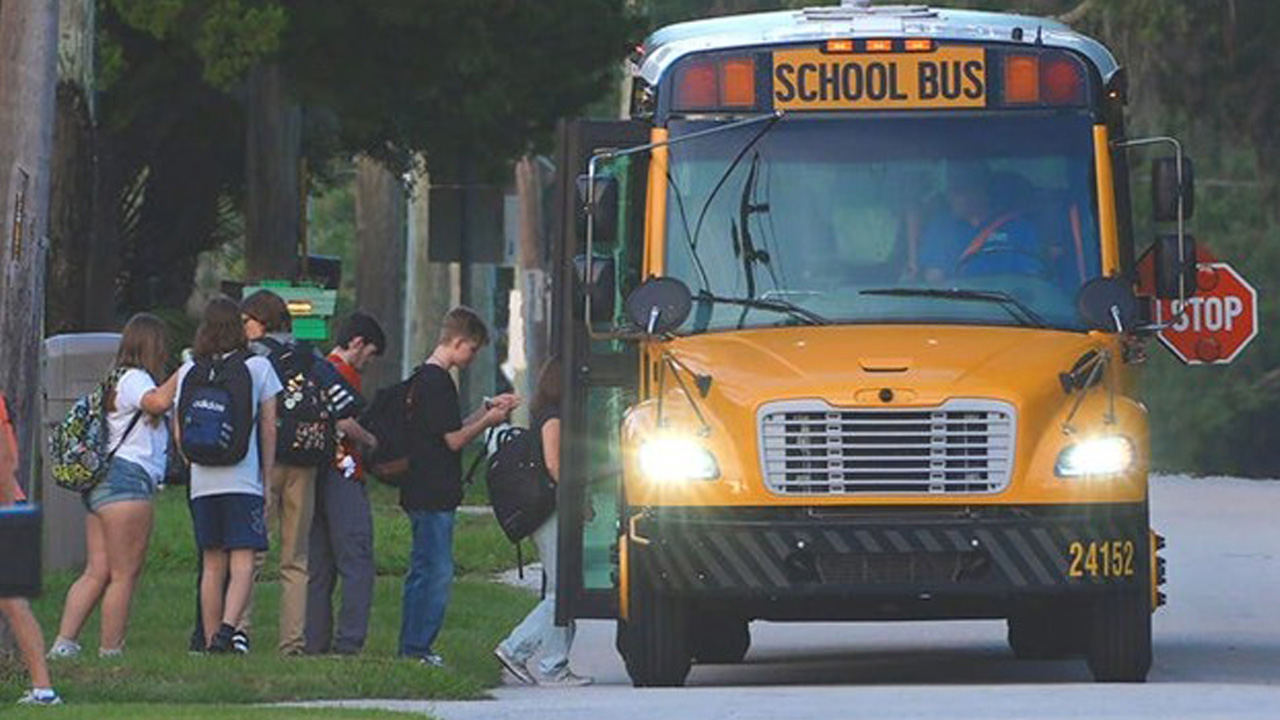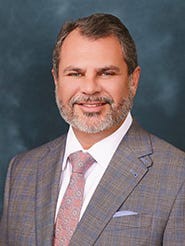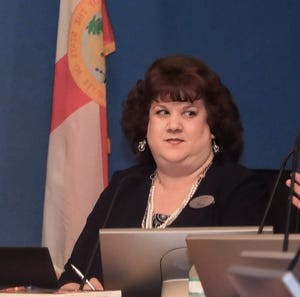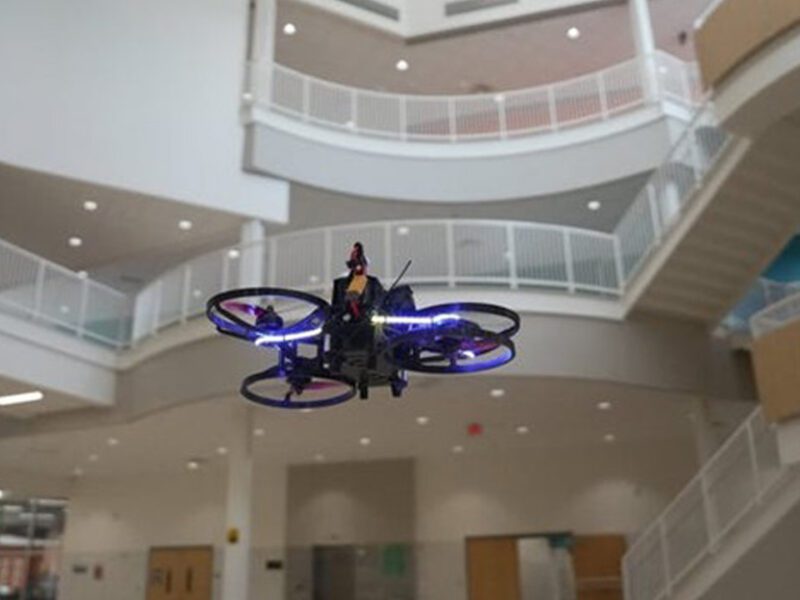
Florida requires districts to bus students to school, but doesn’t fully fund it
The Daytona Beach News-Journal | By Mark Harper | November 17, 2025
DELAND — Florida public school districts are required to provide busing to all students who live more than 2 miles from their elementary, middle and high schools. It’s a state law.
Yet the law comes with no guaranteed funding source for the buses, and while student transportation is a separate line under the state’s Florida Education Finance Program, it provides many districts with less than 50% of what’s needed.
“It’s another unfunded mandate,” Volusia County School Board member Ruben Colón said, echoing a sentiment offered by many school board members and administrators statewide.
His colleague, Volusia County School Board Chair Jamie Haynes, is among the voices calling for lawmakers to bump up state funding of the student transportation fund. She said she is hoping the Florida School Board Association will vote in December to make full funding of student transportation a legislative priority.
Following Haynes’ call, the Volusia County Schools general counsel approached the local delegation of Florida legislators on Oct. 29. But state Sen. Tom Leek’s response doesn’t make is seem likely the Legislature will take up the mantra.
Sen. Leek advises Volusia schools to ‘make a reasonable request’
The Florida House and Senate, in preparing for an election-year Legislative Session that starts on Jan. 13, have spent recent weeks listening to constituents, local governments and organizations, and filing bills.
Prospects for an improved budget year from the 2025 session that ended last June have been presented to lawmakers. The Legislative Budget Commission in September heard a report projecting a $3.8 billion surplus, up from $2.8 billion at the same time in the previous year.
In that context, Gilbert Evans, general counsel and board attorney for Volusia County Schools, approached the all-Republican Volusia County legislative delegation, saying state funds only pay a portion of each district’s transportation costs, leaving the rest to be covered by other local district revenue sources.
“We propose that the state fund all student transportation costs in each district, including the necessary resources to attract, hire and … maintain bus attendants,” Evans said. “Full funding would ensure safe, reliable, and on-time transportation of all students without forcing districts to divert resources from instructional needs.”
At a meeting at which most of the requests were made without back-and-forth with the lawmakers, Sen. Leek asked Evans a series of questions, starting with:
“How much money do you need? How much money do you need today, say we give it to you, you’re good?”

Florida state Sen. Tom Leek, R-Ormond Beach Florida Senate
Evans said: “I wasn’t expecting that question, Sen. Leek.”
Leek said he asked the question for a reason.
“The real answer is there is no answer. Because every time you come up, we give more money, more money and more money, the request always comes back for more money, more money and more money.”
Leek said the school district should be prepared with a specific amount requested.
“I mean the funding transportation request is huge. Huge,” he said. “A monumental shift in policy, a monumental shift of money. So you gotta know how much that is, and you gotta know … you gotta make a reasonable request to the state.”
Evans said he would respond to Leek’s office.
Florida provided 69% of Volusia’s transportation costs in 2024
In school year 2023-24, the most recent of which the Florida Department of Education has posted district transportation profiles on its website, Volusia County and Baker County each received 69% of their transportation costs from Florida, leading the state.
Other districts were closer to 50% of their transportation costs.
But Monroe County got just 21%, or less than $1.3 million of the more than $6 million it spent on transportation.
While some districts are able to stretch the state funding further through greater efficiency in managing its school bus routes and planning, other factors are at play for districts like Monroe, home to the Florida Keys.
Monroe County School Board member Sue Woltanski, who wrote an analysis of Florida’s school transportation funding titled, “The Wheels on the Bus … are Underfunded,” spoke in an interview about her county’s string of islands strung together by 113 miles of U.S. 1, the Overseas Highway.
“We have three high schools in our 9,000-student district, each of them are 50 miles apart,” she said. “We have always had to deal with the challenges of transportation due to our geography. And I think other districts have, as well.”

Dr. Sue Woltanski, member of the Monroe County School Board in Florida, has written about how Florida’s school transportation funding is inadequate.
Because of the high cost of living in the Keys, Monroe County faces challenges finding school bus drivers. Consequently, she said, the district has had to offer higher salaries, raising costs.
“I believe in school buses. I don’t think kids would get to school on time if they didn’t have that,” Woltanski said. “And I don’t think we want all those cars on the road. So I think it’s a value. But I think it is a value that is imposed on public schools, not charter schools, not private schools.
“And we are not getting funded in a way to make up for that,” she said. “So we’re having to take money out of the classroom to transport kids to school in a way that other publicly funded systems are not required to do.”
Nearly 50% of Flagler County students ride bus
The call by school districts for more state transportation funding is not new.
Duval County Public Schools made increased funding, “potentially covering the full cost,” for transportation services part of its 2025 legislative agenda. “This adjustment would enable existing financial resources to be redirected toward initiatives that directly promote student success,” the platform states.
The St. Johns County School District made improved school transportation funding part of its 2024 legislative platform, asking for an increase from $1,129 per eligible student transported.
And while Flagler County Schools hasn’t made student transportation funding part of its 2026 legislative agenda, school board Chairman Will Furry said he won’t complain if the Florida School Board Association does.
“It’s an ongoing unfunded mandate that we continually receive from the state,” Furry said. “For example, last year we spent $6.2 million on transportation. We only received $4.1 million from state funding.”
Economic factors, such as the rising minimum wage, fuel and maintenance costs, have driven transportation prices higher, Furry said.

Will Furry
Flagler County Schools has a higher than average percentage of student bus riders, at 48%. Furry said the way Palm Coast was developed, with drainage swales taking the place of sidewalks along the side of many roadways, makes it more challenging for students to walk to school safely. Also, he said Old Kings Elementary’s location amid busy roadways without safe pathways to residential areas means students at that school near Flagler Beach must either ride the bus or be dropped off by parents.
“We definitely would support the additional funding for transportation,” Furry said.
Volusia looks to reduce busing costs through strategic planning
Volusia County Schools is expecting $14.6 million in state funding for transportation in the current, 2025-26 budget year, but its projected budget is $21.8 million, leaving a $7.2 million gap.
“That means the FEFP revenue will cover about 67% of Volusia’s budgeted transportation costs, compared with the statewide average of 42% based on the 2023-24 data. In other words, while the underfunding of student transportation is a statewide issue, Volusia operates its program far more efficiently than most districts in Florida, though we, like others, would welcome additional state support for this critical service,” according to Danielle Johnson, coordinator of community information services for Volusia County Schools.
Haynes, the Volusia County School Board chair, said advocacy for more state funding is one approach. But she said the district is also proactively attempting to contain costs.

Jamie Haynes
In recent years, the district built a new Turie T. Small Elementary School in Daytona Beach, eliminating a busing plan that had previously sent neighborhood children to eight different schools, some as much as 45 minutes away, Haynes said.
Another plan in the works is to expand Pine Ridge High School’s capacity.





